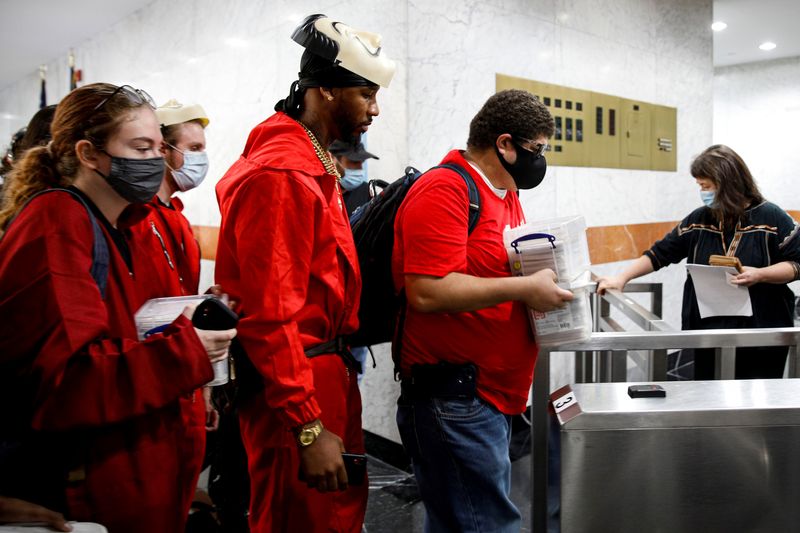Investing.com’s stocks of the week
By Kanishka Singh
WASHINGTON (Reuters) - The United States' union membership rate, or percentage of wage and salary workers who belong to unions, edged down to an all-time low in 2022, data released by a government agency showed.
The union membership rate fell from 10.3% in 2021 to 10.1% in 2022, according to data released by the U.S. Bureau of Labor Statistics on Thursday.
However, the number of wage and salary workers who are members of unions, at 14.3 million last year, increased by 273,000, or 1.9%, from 2021, the data showed. The total number of wage and salary workers grew by 5.3 million, or 3.9%, most of them non-union workers.
"This disproportionately large increase in the number of total wage and salary employment compared with the increase in the number of union members led to a decrease in the union membership rate," the Bureau of Labor Statistics said in a statement.
The data released Thursday shows that while unionization efforts have come into the limelight, they have not translated into greater representation of the workforce.
A surge in union organizing began during the COVID-19 pandemic in the U.S. and has included unprecedented efforts to unionize Amazon.com Inc (NASDAQ:AMZN) warehouses, Starbucks (NASDAQ:SBUX) cafes, Apple Inc (NASDAQ:AAPL) retail stores and video game developers.
In December, the National Labor Relations Board (NLRB), the agency that enforces U.S. labor laws, made it easier for unions to organize small groups of a company's workforce, a move that was expected to give them a key advantage in campaigns to unionize factories, warehouses, universities and other sprawling workplaces.
The data on union membership is collected as part of the Current Population Survey, a monthly survey of about 60,000 eligible households that obtains information on employment and unemployment among the United States' civilian, non-institutional population age 16 and over.
